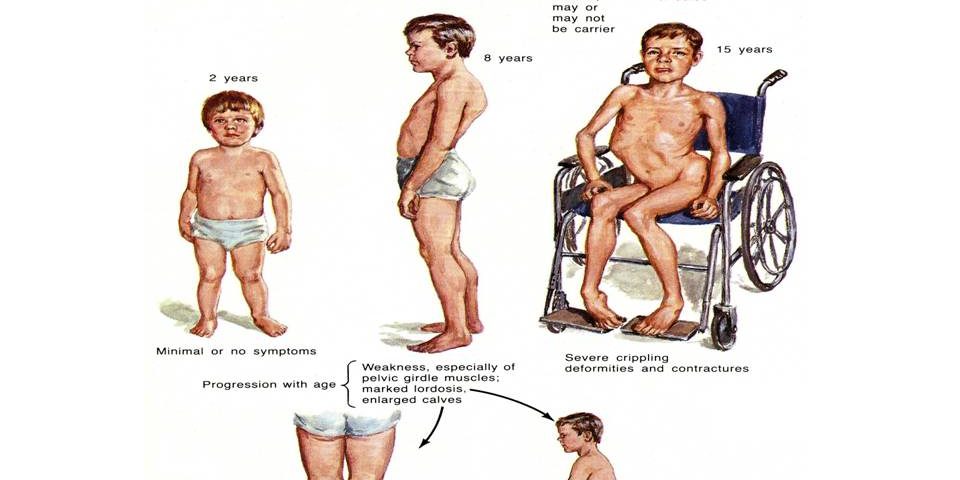
What is Muscular dystrophy?
Muscular dystrophy refers to a group of over 30 disorders that lead to muscle weakness and consequent loss of strength. As the condition progresses, it becomes difficult to move. In some extreme cases, it may affect breathing and heart function, leading to life-threatening complications. It depends on the type and severity, the effects will be mild, progress slowly over a normal lifespan, there may be moderate disability, or it can be fatal. It is caused by genetic mutations which interfere with the production of muscle proteins that are needed to build and maintain healthy muscles. There is currently no cure to prevent or reverse muscular dystrophy, but certain physical therapies and medical treatments can improve symptoms and slow the progression.
The main forms of muscular dystrophy may affect up to 1 in every 5,000 youung males but other variations can strike in adulthood.
Symptoms
As time goes on, the following become more likely:
Causes
Certain genes are involved in making proteins that protect muscle fibers from damage. Muscular dystrophy occurs when one of these genes is defective. Each form of muscular dystrophy is caused by a genetic mutation particular to that type of the disease. Many of these mutations are inherited. But some occur spontaneously in the mother’s egg or the developing embryo and can be passed on to the next generation.
Complications
The complications of progressive muscle weakness include:
Physical therapy treatment at SOS PHYSIO
Unluckily, there’s no such cure for any form of muscular dystrophy. But several types of therapy can reduce problems in the joints and spine to improve the quality and sometimes the length of life in people & remain mobile as long as possible.
There are many physical therapy treatments such as Manual therapy & Active Release Techniques (ART) are found to be very effective in treating this type of disorder.
For more information- Contact your local SOS PHYSIO clinic.
Tags- Physical therapy for Mascular dystrophy , Physical therapy clinic Aventura, Physical therapy clinic Sunny Isles, Physical therapy clinic Hallandale, Physical therapy clinic Hollywood, Physical therapy clinic Miami, Medicare physical therapy Hallandale, Best physical therapy clinic Aventura